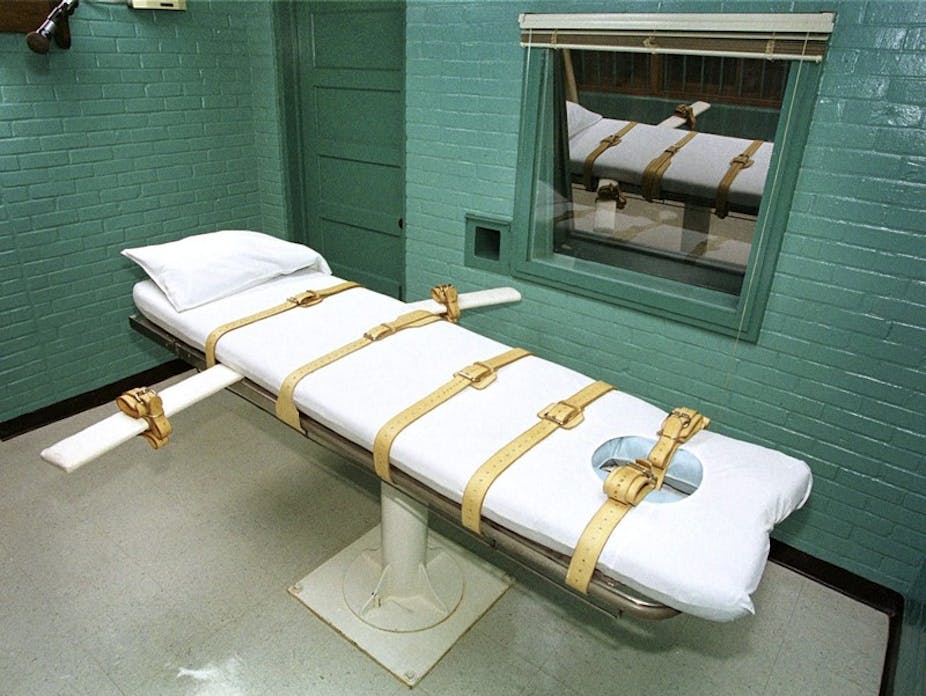Once again, a prisoner has died an unseemly death in the execution chambers of the United States of America. Facing a shortage of the drugs needed to carry out a lethal injection, the state of Oklahoma decided to experiment on a live human being – with disastrous results. After being subjected to treatment some described as torture, Clayton Lockett ultimately died of a heart attack.
This has sparked the usual calls for the abolition of capital punishment. It would be a grim irony indeed if the fate of the death penalty, like the fate of so many death row inmates, were sealed by a botched execution.
But of course, it might not be. After all, many supporters of capital punishment take the view that prisoners should suffer deaths as painful, if not more painful, than the deaths to which they subjected their victims. They are therefore unlikely to change their minds about capital punishment just because a murderer has suffered. Indeed, the briefest outline of Lockett’s crime makes it difficult to feel sympathy for him.
He was involved in a robbery that culminated in a young woman being buried alive, and was ultimately found guilty of 19 charges in all – including first degree murder, rape, forcible oral sodomy, and kidnapping. But the US Supreme Court has said we must not impose gratuitous and needless pain when executing those sentenced to death, indicating that we should not stoop to the moral level of those we have deemed fit to be killed. This, then, is the quandary that the highest court has set the nation: how do we kill a person humanely?
After turning our backs on hanging, and on electrocution, and on the gas chamber, and on firing squads, we are now struggling with a medical model of killing. Although lethal injections have the appearance of serenity and humanity, recent experiences have shown that they are not without their problems.
In an era of drone warfare and Google Glass, it seems bizarre that we do not have the technology to kill a person humanely. But the more bizarre thing is that we have set ourselves the task in the first place.
The death penalty supposedly serves several purposes, one of which is the expression of the community’s moral outrage at the perpetrator of a horrific crime. Is it really possible to kill a person humanely, while simultaneously expressing our outrage? Perhaps a violent and ugly death is the best way of expressing our anger at the perpetrator of the crime.
If this is true, states such as Oklahoma and Missouri cannot justify keeping their execution procedures secret. They should bring the death penalty out into the open so that the public can see justice being done in their name, and to send a clear statement to society that violent crimes will not be tolerated. Only then will the US fully join the company of its allies in capital punishment, the likes of North Korea and Iran.
But of course, if the US does not want to keep company with these states, then it should abolish capital punishment altogether.

